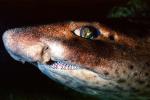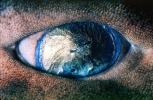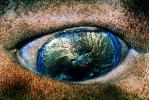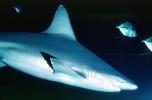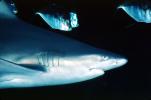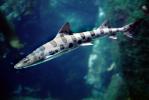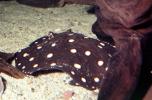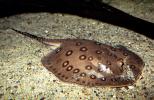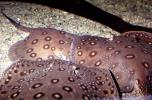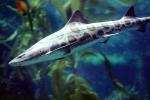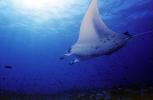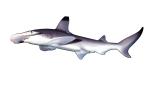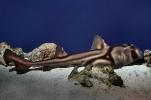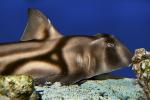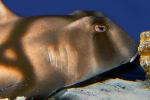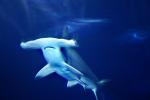Explore over 500,000 Images in my personal collection
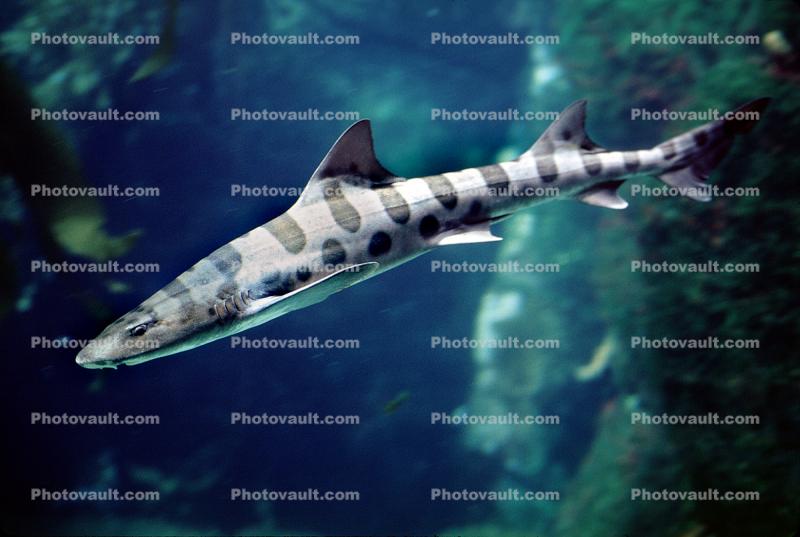
|
|

- Code Number:
- AACV01P09_03
- Title:
- Leopard Shark, (Triakis semifasciata), Elasmobranchii, Carcharhiniformes, Triakidae
- Triakis semifasciata shark lives in bay environments, near the shore, and sometimes in the open ocean. It has a long slender body and can grow up to seven feet. During the summer months in June, July and August, these sharks congregate together in the shallow water off the coast of San Diego.
This shark feeds on benthic (bottom-dwelling) prey such as worms, clams, crabs, shrimp, octopus, and small fish. It has small, pointed teeth which it uses to capture its prey.
The leopard shark is ovoviviparous. This means the female gives birth to live young that have developed from eggs hatched inside her body. The young are usually born in spring. This shark is not considered dangerous to people, though any animal will bite if bothered. The leopard shark is also called a cat shark.
Kingdom: Animalia
Phylum: Chordata
Class: Chondrichthyes
Subclass: Elasmobranchii
Order: Carcharhiniformes
Family: Triakidae
Genus: Triakis
Species: Triakis semifasciata
(Girard, 1854) - Keywords:
- Image by:
- Wernher Krutein
- Caption Disclaimer
Royalty Free: Calculate Price



